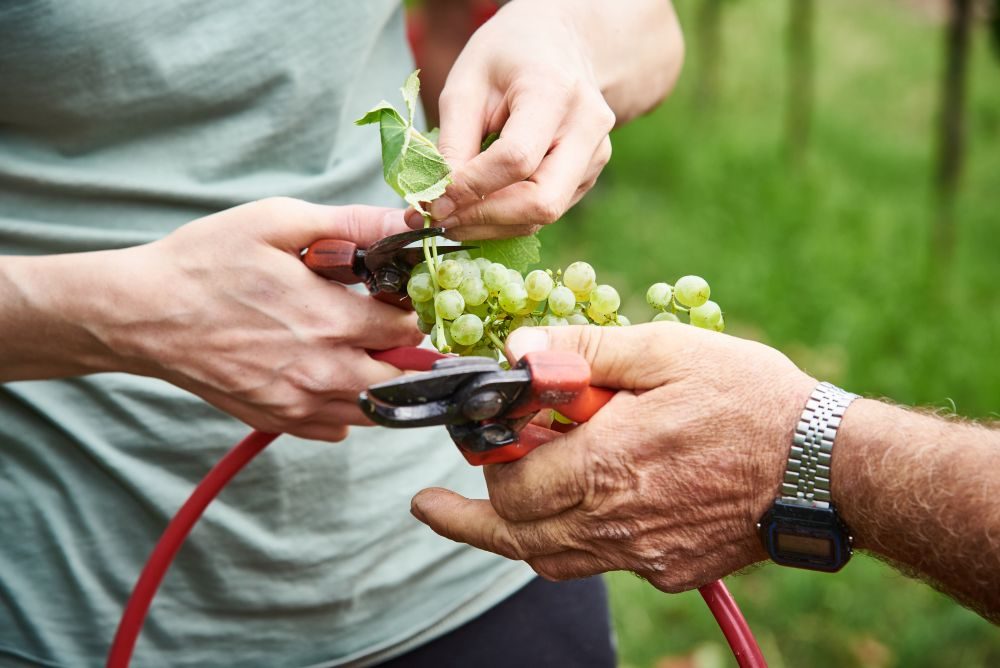
Italian indigenous grapes: oenological excellence

Not everyone knows that Italy has an important world record: among its slopes and valleys 635 different varieties of grapes are grown (information taken from Catalogo nazionale varietà di vite). So, 635 is not just a number, but also a reflection of our will to protect and value both the diversity and the tradition.
Definition of indigenous grapes
What does indigenous mean? This word (“autoctono” in Italy) comes from the Greek one autóchton: autós (same) and chthón (soil, ground).
It refers to all the grapes whose origin area coincides with the ground where they are grown.
Let’s give an example: Merlot grape is common all over the world, but it has French origins, in the Bordeaux region. So, a Merlot can be identified as indigenous only if it is grown in the Bordeaux region. A Merlot grown in another country, such as Italy, must be defined as an “international grape” (rarely allochthonous).
This is, obviously, a conventional definition: we all know that the vine has really ancient origins and, over thousands of years, has gone through a lot of movings, adjustments and genetic mutations (often spontaneously), but when a grape shows a strong and long lasting connection with a territory, can be defined indigenous.
Here is a short historical digression.*
Wild vine has been domesticated for the first time in 6000-5800 b.C., in the south area of the Caucaso, while the vitis vinifera vinification seems to have started in the area between Syria and Anatolia. Bird migrations and commercial exchanges promoted the spread of this cultivation to the west area. In Europe, an important role in the viticulture birth and development, is played by Etruscans, Hellenic and Roman populations between the 2nd and 4th century b.C.. Over the years the growers have selected and reproduced the best varieties for each area, improving the production techniques. Long story short: the adaptation has become authenticity.
Also in the Veneto region the viticulture went through many conditioning since its origin, dating back to the Iron Age, to this day. Think about the Serenissima Republic of Venice: the ships, while sailing on the Mediterranean Sea, met many different traditions, cultures and also food. Venetian people mostly brought on the Euganean Hills aromatic grapes like Moscato, Malvasia and Marzemino.
Indigenous grapes features
A really important characteristic of the indigenous grapes is the peculiarity: wines from these grapes are really interesting because they frankly show the deepest features of their territory. They created an incredible synergy with the ground and the climate, and they give the best result when they grow in the same place they were born. It is a winemaker’s responsibility to protect this incredible gift: our country is so diversified that each region has different indigenous varieties, often grown in little quantities.
Why are indigenous grapes so important and protected?
The most important feature of indigenous grapes is their individuality. The connection among the subsoil, the soil, the herbaceous and shrubby species growing along the rows, the microfauna and the climate conditions defines a unique wine that is worth to be tasted and discovered.
Another important aspect is the culture. Wine lovers are more and more interested about the story behind a specific wine: its (possible) origins, the reason why it is designed that way, what its peculiarities are and why it is different from other wines. It is very important not to homologate but to differentiate, in order to spread the oenological and historical culture of a specific territory together with its traditions.
Beside the cultural and touristic success of the indigenous wines, we must consider the importance of biodiversity. Keeping vineyards diversities safe, and, more generally, the diversities of the surrounding environment, is not only a responsibility, but also a privilege that sometimes is passed over by for commercial’s sake. The truth is that, without biodiversity, the eco-system breaks down. Without the numerous varieties of species and the connection among them, the balance and the equilibrium of a territory becomes unstable, more vulnerable to illnesses and sensitive to atmospheric events.
Indigenous grapes from the Veneto region
There are plenty of indigenous grapes in the Veneto region and some of the wines from those varieties became distinctive elements of the territory. Think about Monti Lessini with Durello wine, or the Valpolicella region with its Amarone, known worldwide and obtained from Corvina, Corvinone, Rondinella, Molinara and Dindarella grapes.
Regarding the Euganean Hills, we can mention several grapes like Turchinella, Corbinella, Marzemina Bianca, Marzemina Bastarda, Cavarara, Pattaresca, Pinella…
Over the years Ca’ Lustra has played its part in order to protect and promote the indigenous varieties. In the 2000s we took part, together with other winemakers from the Euganean Hills, to a project whose purpose was to recover old Euganean grapes, offering both territories and effort. One of the most interesting indigenous grapes is, in our opinion, the Pinella, which gives amazing results even when it grows in hot and dry conditions. Discover our story with the Pinella grape.
The journey among the indigenous grapes is fascinating: rarities, stories and also legends that capture the curiosity and make you want to know more about them.
*Source: “Colli Euganei - nati dal fuoco, plasmati dalla viticoltura” di Serena Imazio e Attilio Scienza
